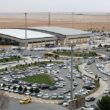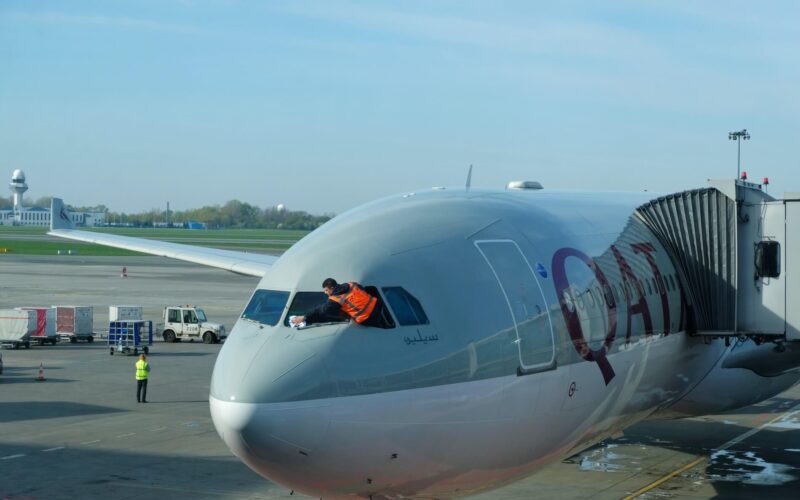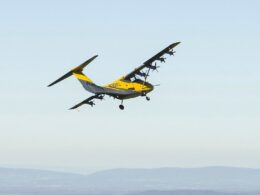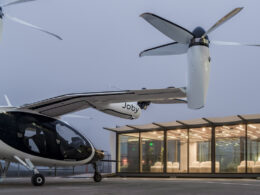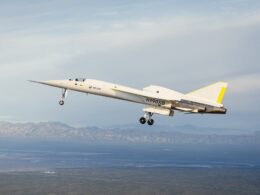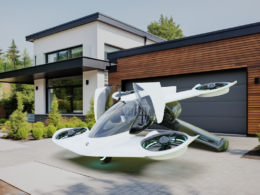Washing an aircraft is a pretty straightforward task: the process involves a brush, soap (or a cleaning detergent, to be precise), some water and the dedication not to miss a spot. Yet, when compared to an ordinary car wash, aircraft cleaning has one minor but cardinal difference. If one might wash their car in an hour or so, getting an Airbus A380 spotless requires team effort and around eight hours of work. AeroTime looked at how aviation has turned to robotics to cut aircraft downtimes.
Surprisingly, the old school brush-by-hand method is still alive and well when it comes to aircraft washing. Many operators continue to rely on teams of ground workers dedicating hours to scrub an airplane fuselage. On the opposite side of the spectrum there are fully automated water spray drive-ins, similar to those we are used to seeing in a car wash. Between the mobility of manual crew and hangar-bound washing machines, is where aviation robotics steps in. AeroTime News spoke with Jan Brunstedt from Aviator Robotics, who explained how robotics are applied for aircraft washing.
The company produces an aircraft cleaning robot called Nordic Dino. “Nordic Dino is a cost-effective and efficient way to wash an aircraft in a safe working environment which reduces usage for water and detergent, saves on fuel consumption, and most importantly limits ground and maintenance time, which is a key component for commercial and military aircraft maintenance and use,” explains Vygaudas Usackas, the Chairman of the Board of Aviator Alliance Group, the parent company of Aviator Robots.
How does automatic aircraft wash work?
Nordic Dino is a semi-automatic robot used for both dry and wet washing of aircraft exteriors. Being relatively small and mobile, the system can be used wherever an aircraft is parked and can be transported across different airports if need be. “Some of our customers actually transported this unit between small airports,” clarifies Brunstedt.
The system consists of a mobile power unit, spray nozzles and rotating cleaning brushes powered by a lightweight remote control. First, an operator moves the arm into position using remote control, where the arm automatically adjusts to the fuselage. Detergent and water are then sprayed into a brush from a tank inside the robot.
Most dirt from the aircraft fuselage is removed this way. The procedure is more efficient than cleaning by hand, which requires both more effort and water to rinse the foaming that is greater during the manual wash, according to Brunstedt. In fact, the semi-automated wash using the robot reduces the amount of water needed to wash an aircraft by about 50%.
While the brush appears like a normal car wash brush at the first sight, like many things in aviation it is far from being so ordinary. Rather than a standard brush, the one on Nordic Dino is custom-made specifically for the task ‒ crushed at the end and very very soft. This is because aircraft windows are sensitive and a “normal” brush would easily scratch them. “When we sold our robots to Airbus, they did a lot of testing to make sure that the brush does not scratch the aircraft,” explains Brunstedt.
Automatization debate
Apparently, just like a debate about full cockpit automatization, similar concerns are found on the exterior side of a plane’s fuselage. Even for a task seemingly as straightforward as aircraft washing, human supervision is still required in case things go sideways.
“With the technology we have today, we can do it completely automatically, but that is not approved by the manufacturers [Airbus & Boeing – ed. note],” Brunstedt says. “Someone needs to walk besides the aircraft and see if something goes wrong. They don’t allow 100% automatic machines.”
So what can go wrong? There are multiple critically important areas on the exterior of an aircraft, including the cockpit area, cockpit windows, aerial intake area. These areas are washed manually.
Normally, for a narrow-body aircraft wash, two people work alongside Nordic Dino: one manual washer and one who operates the robot. While the robot cleans about 80% of an aircraft surface area, 20% has to be done manually.
So what’s the point of using the robot?
The main feature of robots for aircraft washing, like Nordic Dino, is that they allow airlines to save downtime. For instance, to completely wash a narrowbody aircraft by hand, it takes 3 to 6 people and around 3 hours of work. Using washing robots helps to cut this grounding time dramatically. For instance, two people (one robot operator and one person doing manual wash) and a Nordic Dino robot can wash a narrowbody plane in around 1,5 hours.
For widebodies, time savings are even greater. While it also depends on the number of team members working on the task and other factors, one can assume it is around twice as much as for a narrowbody. For instance, back in 2014, United Airlines described a wide body aircraft washing as requiring a team of 3-5 people and five hours of work. In the same publication, British Airways revealed it took them up to eight hours to wash a plane.
For example, Qatar Airways uses a smarter approach for their bigger planes. In addition to two manual crew, they use two robots, a smaller and a bigger one. As a result, the airline can wash an aircraft like the Airbus A350 in under two hours. “We sold two units to the Airbus company, which they are using in Toulouse, France,” Brunstedt explained. “They were visiting Qatar during a wash of an A350. They did the whole wash in 1 hour and 50 minutes. It’s quite amazing how a professional crew can do it so quickly.”
Looking into the future, the Nordic Dino robot appears to stand firmly among the eco-friendly solutions. According to Usackas, the company already offers clients a new electric Zero Emissions version. In the near future, Nordic Dino will also offer a dry wash solution, helping to cut water consumption to the zero. The company is already developing a system for the task: while the robot and its main features will remain the same, a new brush and different chemicals will enable a 100% dry wash, Brunstedt explains.
For the reasons above, Nordic Dino is rapidly becoming a-must in the fleets of both airlines and military units, according to the company’s chairman. “It is a pioneering business which already leads the ground, especially in the Middle East market, but is also expeditiously expanding into markets further in Asia, Europe and the Americas,” said Usackas.




